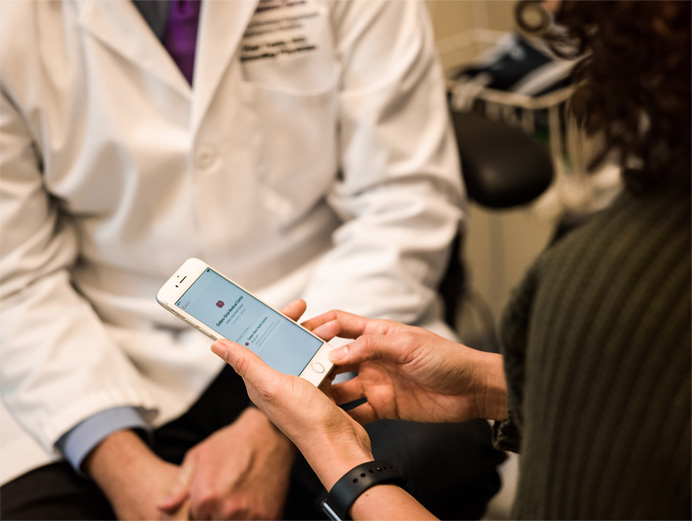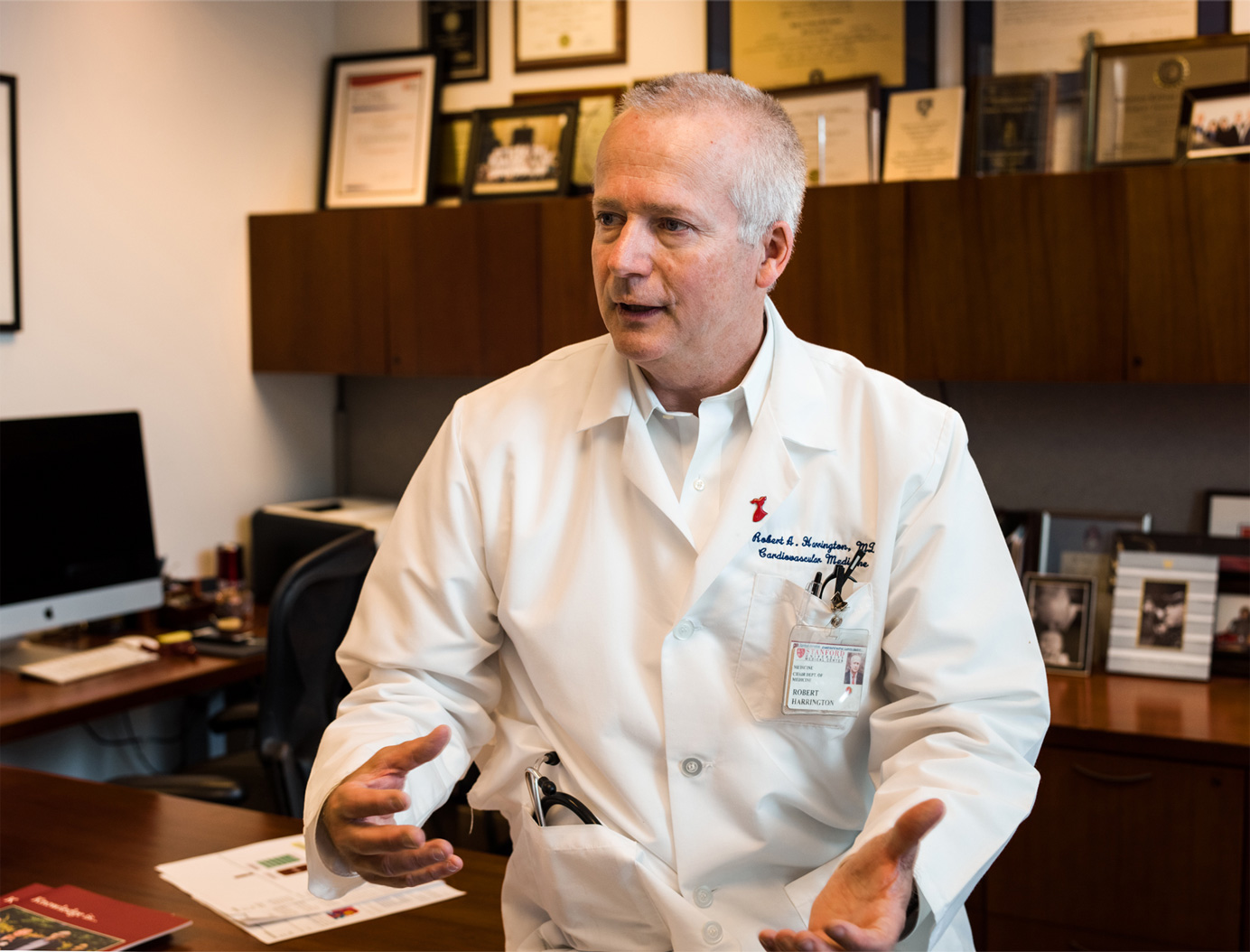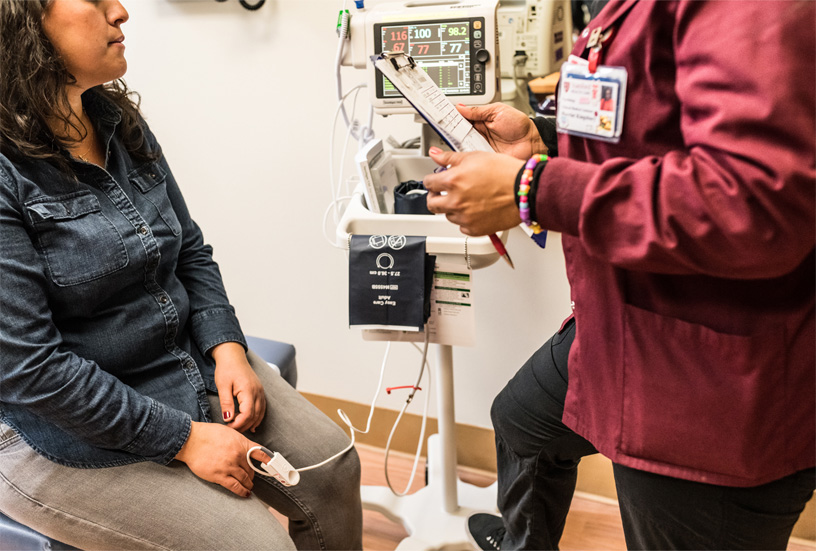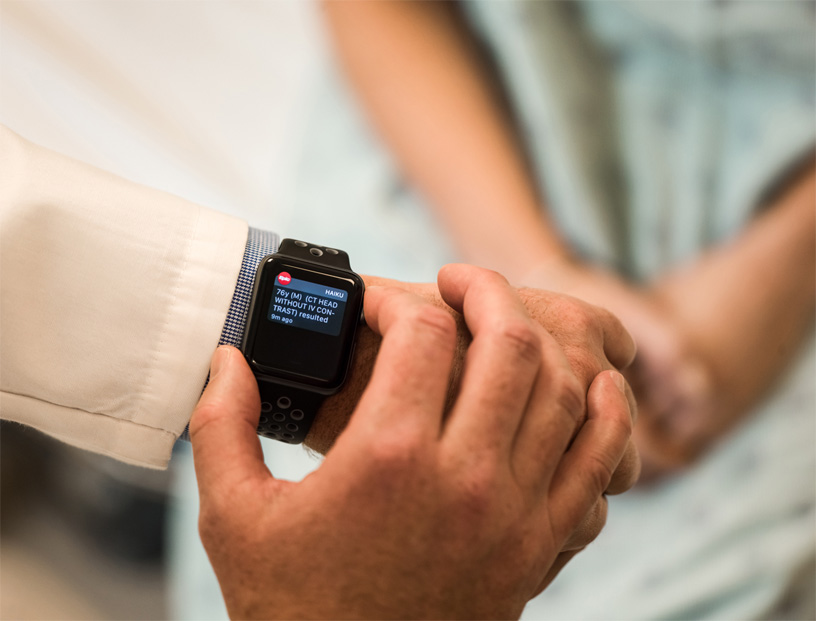FEATURE
March 29, 2018
Doctors put patients in charge with Apple’s Health Records feature
When Dr. Robert Harrington, cardiologist and Chairman of the Department of Medicine at Stanford, sees patients, they frequently pass him stacks of printed medical records and spreadsheets, hand-drawn charts or their smartphone with notes and photos. Occasionally, they’ll enter his office with grocery bags full of medications to walk him through the details of their care. “People hand you all sorts of things these days,” he says, “and more data is almost never bad, but when they show up with paper, how do you summate that?” He’s hired a skilled team to take on the Herculean task of pulling it all together. “It is a labor intensive, very tedious task.”
Starting today, patients of NYU Langone Health, Stanford Medicine and nearly 40 other health systems representing hundreds of hospitals and clinics can view their medical records right from their iPhone. The updated Health Records section within the Health app helps consumers see medical information from various institutions organized into one view and receive notifications when their data is updated. This information can help patients better understand their health history, have informed conversations with physicians and family members, and make future decisions. Health Records data is encrypted and protected with the user’s iPhone passcode.
As a self-proclaimed former inner-city kid, Boston Red Sox fan and “data guy,” Dr. Harrington says “any time you can put information in patients’ and doctors’ hands and allow there to be more informed decision making, that is the best of all.” In a world where patients have more technological access to data than ever, a platform like Health Records is, in his words, “an important maneuver for patient empowerment and the way the world needs to be.”
Years ago, a patient who had trouble breathing came into Dr. Paul Testa of NYU Langone's emergency department and showed their Medical ID on their iPhone. The phone provided Dr. Testa with relevant information — like allergy details — to be able to support the patient’s care. “With that information, I could make inferences about who my patient was when they couldn’t tell me themselves,” he says. “Now, there’s a whole different world on our patients’ and my phone.”
As Chief Medical Information Officer at NYU Langone, Dr. Testa works to improve the digital experience for patients and colleagues that gives them more power and better care. Eight generations of his family have practiced as physicians and he is invested in improving the family trade through technology.
When it comes to patients coming into the ER, Dr. Testa says “there’s always some chaos that got you there” and he points to technology helping to facilitate more meaningful conversations. For example, he implemented a new service for ER doctors through Apple Watch’s push notifications. Today, 35 doctors can request notifications for vital lab results so they see the results and respond quickly as well as be notified as their patients progress through the system from arrival to discharge. He believes Health Records “is an incredible first step to being able to have the patient take possession of their own information,” but more importantly, “it highlights where we’re going to end up.”
The new Health Records feature was previously available to patients who joined the Apple Beta Software Program. Today, patients from nearly 40 health institutions listed below can view their medical records simply by updating their iOS software on their iPhone. Further information for health institutions is available here.
Northeast and Mid-Atlantic United States
- AtlantiCare
- Geisinger Health System
- Johns Hopkins Medicine
- LifeBridge Health
- MedStar Health
- NYU Langone Health
- Partners HealthCare
- Penn Medicine
- Thomas Jefferson University Hospitals, Inc.
- Valley Medical Group P.C.
- Yale New Haven Health and Yale Medicine
Midwest
- Cerner Healthe Clinic
- CoxHealth
- Mosaic Life Care
- Nebraska Methodist Health System
- OhioHealth
- Rush University Medical Center
- Southwest General Health Center
- Truman Medical Centers
- The University of Chicago Medicine
South
- Adventist Health System
- BayCare Health System
- The Duke University Health System
- Methodist Le Bonheur Healthcare
- Mission Health
- Ochsner Health System
- Ortho Virginia
- TSAOG Orthopaedics
- UNC Health Care
- Vanderbilt University Medical Center
- WVU Medicine
West
- Cedars-Sinai
- Dignity Health
- Eisenhower Health
- Providence St. Joseph Health
- Scripps Health
- Stanford Medicine
- UC Irvine Health
- UC San Diego Health
Images of Health Records





